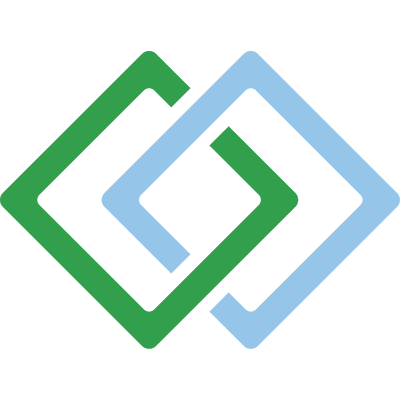
@ShahidNShah


For decades, the scene in a pediatrician’s office was always the same. A child would stand on a scale, a nurse would stretch a measuring tape, and the doctor would carefully plot a single dot on a paper chart. These charts, with their curving percentile lines, were the gold standard for tracking a child’s development. They told a story of growth in quiet, hand-drawn marks, a method that was reliable but slow, and entirely confined to a folder in a filing cabinet.
The shift from paper charts to smart sensors is transforming how growth data is collected, offering deeper insights and enabling more personalized, proactive pediatric care than ever before through advanced digital technology.
While traditional paper charts served their purpose for many years, they had significant limitations that impacted both doctors and families. These manual charts were prone to human error—a slight miscalculation or a misplaced dot could skew a child’s growth curve and lead to unnecessary concern.
They were also isolated documents, difficult to share between doctors, creating gaps in a child’s health record. Today, parents can use an online height comparison chart tool from easyheightcomparison.com to create digital 3D charts and share a PDF with their pediatrician instantly. This bridges the gap between home and clinic measurements beautifully.
The first major leap forward was the move from paper charts to digital software and Electronic Health Records (EHRs). This was more than just a change of format; it was a fundamental shift in how data was managed. These are the main advantages of this digital transition:
The most immediate benefit of digital growth charts was the elimination of human error in calculation and plotting. When a nurse enters a child’s height and weight, the software instantly calculates their Body Mass Index (BMI) and places the data point on the growth curve with perfect accuracy.
This automation saves time, reduces mistakes, and ensures that the information doctors rely on to make critical health assessments is always precise, reliable, and correct.
With Electronic Health Records, a child’s growth data is no longer trapped in a single paper file. It becomes part of a centralized digital record that can be securely accessed by a child’s primary paediatrician, a specialist in another city, or even an emergency room doctor if needed.
This integration provides a complete and unified view of a child’s health history, which is absolutely essential for providing comprehensive and well-informed medical care at every stage of their development.
Digital systems can analyze years of data in an instant, something impossible for a human eye scanning a paper chart. Software can automatically flag when a child crosses a major percentile line, or if their rate of growth suddenly slows down or speeds up.
These automated alerts help doctors spot potential health issues, like nutritional deficiencies or hormonal problems, much earlier than they might have with manual methods, allowing for quicker intervention and better health outcomes for the child.
The latest evolution in pediatric growth monitoring involves smart sensors and connected devices that bring clinic-level accuracy into the home. Here is how this technology is transforming data collection:
Modern “smart” scales and digital stadiometers (height measurement devices) are designed for both clinic and home use. These devices don’t just display a number; they are equipped with Bluetooth or Wi-Fi to automatically send the measurement directly to a secure app or the child’s electronic health record.
This seamless transmission of data eliminates any chance of recording errors and creates a reliable stream of information for the paediatrician to review and analyze over time.
For the youngest patients, wearable technology is becoming an invaluable tool, especially for those in neonatal intensive care units (NICUs). Smart bands or even “smart diapers” can monitor vital signs, fluid output, and weight changes in real-time without disturbing the infant.
This constant stream of data provides a highly detailed picture of an infant’s growth and stability, helping doctors make tiny adjustments to their care that can have a huge impact on their development.
Emerging technology now includes safe, non-invasive 3D body scanners that can capture a child’s complete body measurements in seconds. Instead of just height and weight, these scanners can measure limb length, chest circumference, and body composition.
This provides a far more detailed and holistic view of a child’s growth patterns, helping to identify complex conditions related to body proportion and development that a simple measuring tape could never detect, pushing pediatric care forward.
Artificial Intelligence (AI) and machine learning are transforming digital health data into predictive, personalized healthcare tools. One major advancement is predictive growth modeling, where AI analyzes a child’s growth alongside data from millions of others to forecast future growth patterns. This helps pediatricians spot risks like obesity or malnourishment early, allowing for preventive action.
AI also personalizes nutritional advice by combining growth data with diet logs or genetic markers, offering special recommendations that are easier for families to follow. Additionally, AI can detect subtle growth patterns linked to rare syndromes, prompting earlier diagnosis and improving long-term outcomes for children.

How does growth monitoring technology work?
Growth monitoring technology works by tracking a child’s growth data, which can be accessed by healthcare professionals and parents. This data can be used to identify potential health issues and enable timely interventions.
What are the benefits of growth monitoring technology?
The benefits of growth monitoring technology include improved accuracy, increased efficiency, enhanced accessibility, and early detection of potential health issues.
How can growth monitoring technology be used in pediatric care?
Growth monitoring technology can be used in pediatric care to track a child’s growth and development, identify potential health issues, and enable timely interventions.
Growth monitoring technology has come a long way since the days of manual charts. From digital platforms to smart sensors, technology has improved the accuracy, efficiency, and accessibility of growth monitoring. As technology continues to evolve, we can expect even more innovative solutions to emerge, enabling healthcare professionals to provide better care for children.

Chief Editor - Medigy & HealthcareGuys.
A chemiluminescent immunoassay is a special lab test used to detect tiny molecules like proteins, hormones, or peptides in samples like blood or fluids. It’s a type of enzyme immunoassay (EIA), which …
Posted Jul 4, 2025 Allergy and Immunology Biological Products
Connecting innovation decision makers to authoritative information, institutions, people and insights.
Medigy accurately delivers healthcare and technology information, news and insight from around the world.
Medigy surfaces the world's best crowdsourced health tech offerings with social interactions and peer reviews.
© 2025 Netspective Foundation, Inc. All Rights Reserved.
Built on Dec 26, 2025 at 4:08am